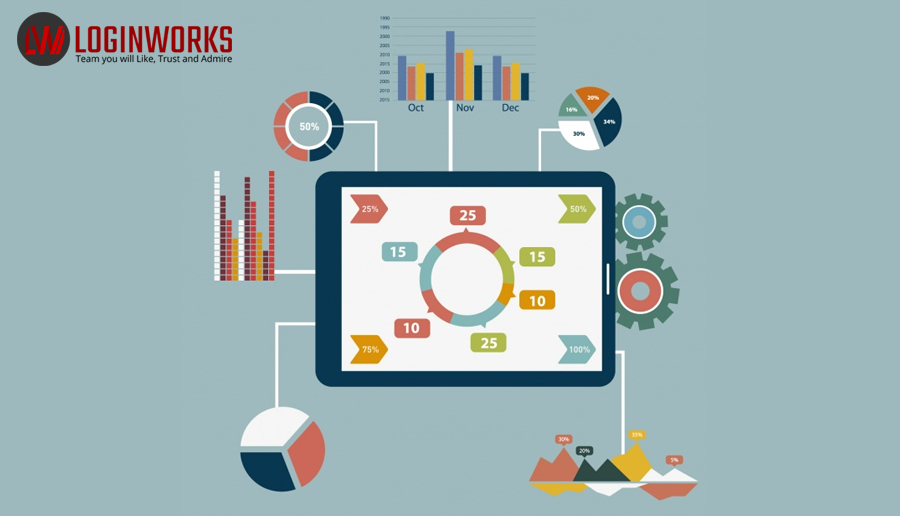In machine learning situations there are two basic types of data – the relevant data that forms a particular pattern and the irrelevant or erroneous data that has tagged along. Let’s refer to the tagger-along as ‘clutter’ for the sake of convenience. When data is amassed from the social media platforms to analyze customer behavior via digital data streaming, a large portion of the data may be ‘clutter’.
When Data Analytical tools handle this data the algorithm will try to analyze all the information, including the ‘clutter’. Thus, it is trying to use the relevant data pattern as well as the clutter to produce reports. This situation is called over fitting of data and will give you inaccurate results.
Jump to Section
How to handle over fitting data
Data Analytics (DA) tools are based on advanced algorithms. As we all know, they can handle vast amounts of data in millions. But if the input parameters are wrong, the output is naturally going to be erroneous.
If production, marketing, and sales strategies are based on these wrong reports your business will consequently suffer huge losses. There are some easy methods to ensure that the DA reports are accurate. They include:
CROSS VALIDATION
This is the easiest method of preventing over fitting data. It involves the use of one sample data for real-time validation and the rest of the data for training the algorithm to produce accurate results. But there is a contradiction in this method.
In fact, this method is a contradiction in itself! You will need a high volume of data as a sample in order to reduce the error variance. In a sense, testing the sample data defeats its own purpose! Also, there is no assurance that the irrelevant data has not been included in the sample.
USING SUBSETS
In this method, the data is broken up into subsets. Every time one subset is used for validation of the algorithm and the rest as used for training the tool. This may seem the same as cross validation but it has one major difference.
Let’s say you take S1 as the first subset for initial testing and S2, S3, S4 and so on is part of the pattern. Once the initial testing is completed, S1 will be added to the pattern and S2 will take its place as the sample subset. The subsets S3, S4, etc. will also be treated as sample subsets at some point. Every time the previous sample will join the rest of the pattern-group to be tested with a new sample subset.
This method has proved to be more effective than simple cross validation. This is because the samples are interchangeable, which in turn reduces bias. Also, most of the data is being utilized for testing in the form of subsets so the level of variance is also minimized. Therefore, alternating the test subsets makes this a more effective method of handling over fitting data during Data Analytics.
REDUCING ITERATIONS
Another effective method of avoiding over fitting is reducing the number of iterations for testing the data. In fact, early stopping is a common practice in machine learning to prevent over fitting of data. The algorithm is designed such, that it stops the testing of sample data when it is on the verge of over fitting. This iterative testing method keeps on updating the learner’s knowledge of when to stop, thus improving its own efficiency in avoiding over fitting.
But this coin has a negative side to it as well. It may lead to a generalization error at the time of reporting. It may not accurately identify irrelevancy because the focus is on the number of iterations and early stopping, rather than on testing subsets of data to remove irrelevancy. Although the ultimate aim is to get rid of redundant data, it may not prove to be effective in all scenarios like the stock market trading, cryptocurrency, and other forms of online financial trading platforms.
PRUNING METHOD
Just as you use pruning to reduce the size of a tree so that it bears better fruit; pruning in machine learning trims the data ‘tree’ and removes those sets of data that will not help in the classification processes. Which implies that is gets rid of the irrelevant data before it begins to form a pattern and analyze it. Thus, pruning will dramatically reduce the size of the test sample as well as the pattern on which the sample will be tested. This method is very effective in handling over fitting data during Data Analytics.
REGULARIZATION
Regularization involves fine-tuning the test sample to a specific level of data-concentration so that it has a pre-defined complexity. This ensures that there is neither a problem of under fitting nor is there an issue of over fitting data during the analysis. If either of the situations occurs, the results will be inaccurate.
For regularization to be effective you need a tuning parameter in the test sample. The sample then has the capability to modify the testing process itself. It makes it simpler or more complex in order to find the best predictions for your queries. This is the most effective machine learning tool for avoiding over fitting of data. What could be better than software that can teach itself to work more efficiently?
To sum up, financial professionals must be careful of over fitting a model based on very less amount of data. Also, if the algorithm is not ignoring the ‘clutter’ or ‘noise’ then the test pattern itself is embedded with irrelevancies and will not produce correct results. If financial and business decisions are based on such reports, it would do a lot of harm to a business enterprise. Stock market trading is one of the most vulnerable situations where analysis of non-regularized digital data streams can generate losses worth millions of dollars. So, using the proper regularization method for the correct process will handle over fitting data during Data Analytics in an efficient manner.
- Business Intelligence Vs Data Analytics: What’s the Difference? - December 10, 2020
- Effective Ways Data Analytics Helps Improve Business Growth - July 28, 2020
- How the Automotive Industry is Benefitting From Web Scraping - July 23, 2020



